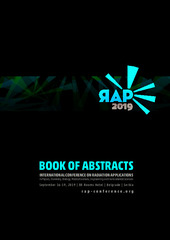| dc.description.abstract | Beryllium-7, a cosmogenic radionuclide, attaches to aerosols promptly after its formation and thereon descends from the upper troposphere and lower stratosphere to the surface. At the surface, this isotope’s activity concentration is closely monitored as a part of radioactivity measurements in many countries. Since the abundance of beryllium-7 offers an insight into the processes that take place along its trajectory through the atmosphere, it is considered a tracer of air mass history. For this reason, there is an incentive to fully understand its behaviour and the mechanisms that correlate it to meteorological parameters. Our analysis, therefore, looks into one particular aspect of this question – autocorrelation properties of the beryllium-7 records that imply a manner in which this radionuclide’s activity concentration changes with time. The analysis is performed on the measurements taken at three Fenno-Scandinavian sites north of 55 °N: Helsinki (Finland), Kista (Sweden) and Risoe (Denmark), given here in order of descending latitude. The data are taken from the Radioactivity Monitoring Environmental Data Bank (REMdb) and span 1987-2013 for Helsinki, and 1995-2013 for Kista and Risoe. The Helsinki data series is longer and with a higher temporal resolution (approximately once in two days) than the Kista and Risoe series (approximately once a week). For each site, we investigate the wavelet power spectrum and look into the scaling properties of the time series, as well as its trend and periodicities. One of the results that the wavelet analysis offers is a power spectrum scaling exponent β, which is related to the decay of the autocorrelation function of a time series, and effectively points to the existence of a temporal trend. A stationary time series is regarded as long-term correlated for β between 0 and 1. Our study gives β values of 0.77, 0.56 and 0.63 for Helsinki, Kista, and Risoe, respectively. This finding implies a trend in all of the investigated beryllium-7 records, with the strongest trend detected for Helsinki. In addition, the investigated wavelet power spectra show local maxima corresponding to characteristic time intervals of the series. The most prominent peak in each spectrum points to the seasonal cycle, i.e. a periodicity of one year. A further wavelet analysis of the meteorological parameters, such as temperature and precipitation, could shed more light on their possible correlation with the beryllium-7 trends, and, in turn, these findings could allow us to evaluate this radionuclide’s full potential as an atmospheric tracer. | sr |

